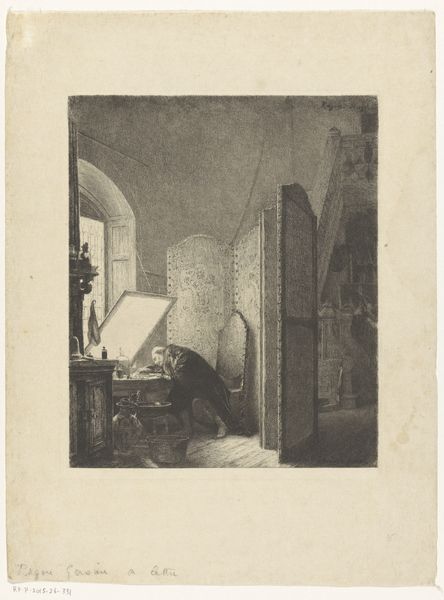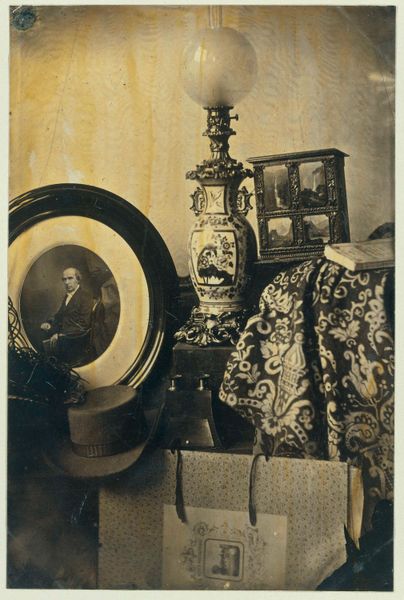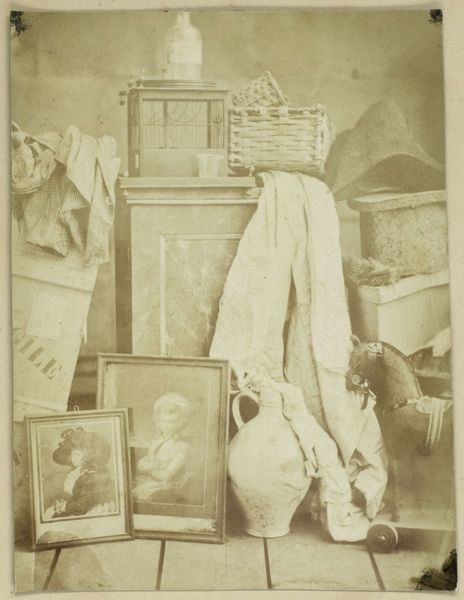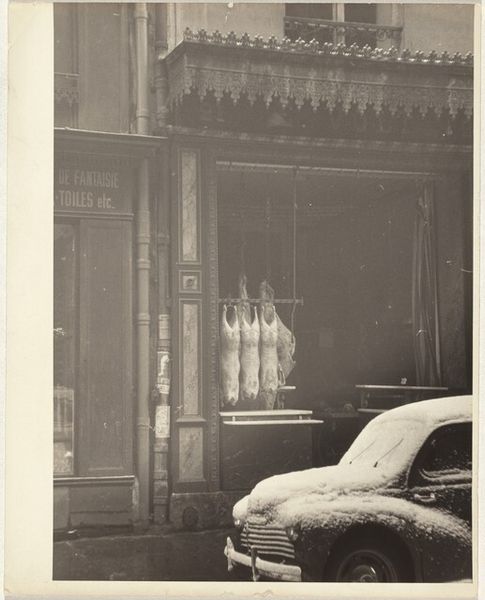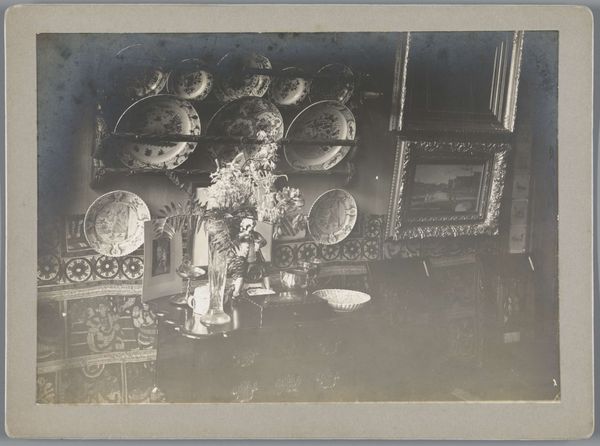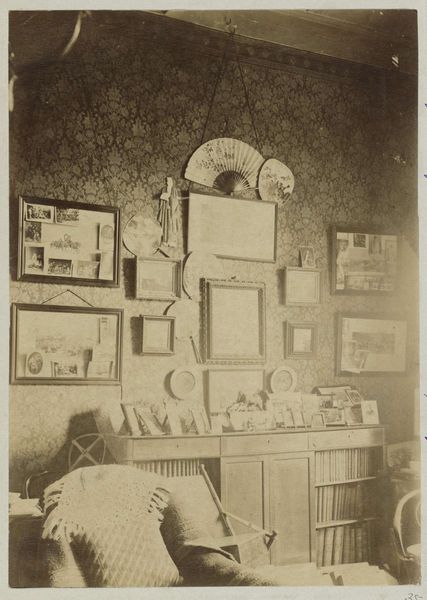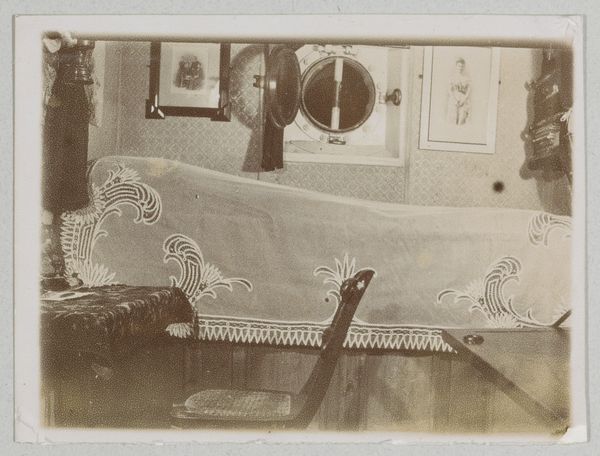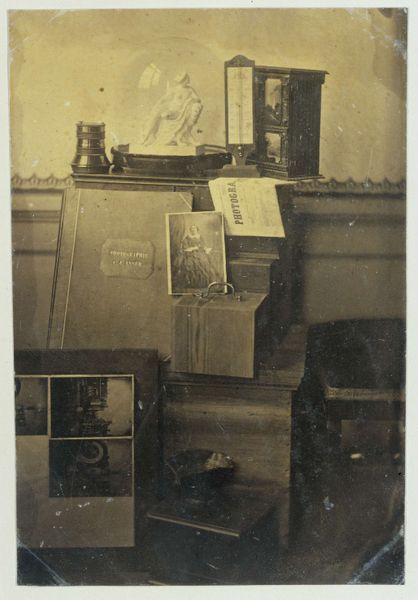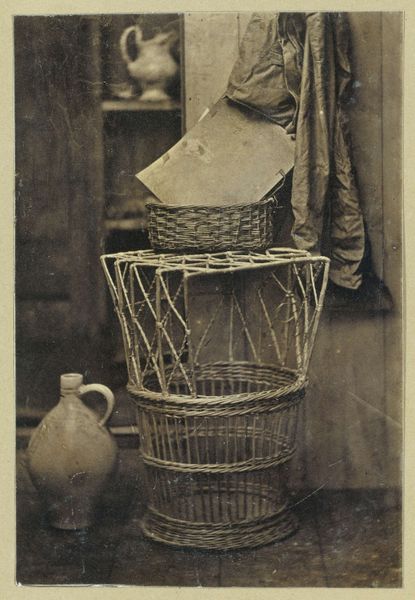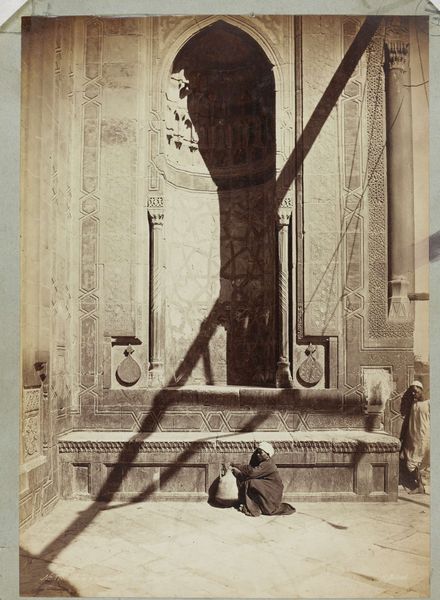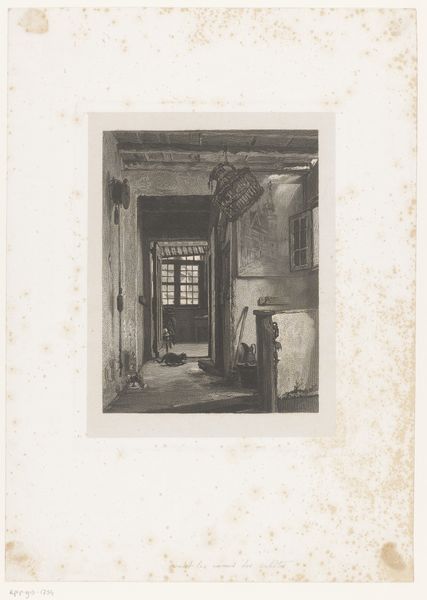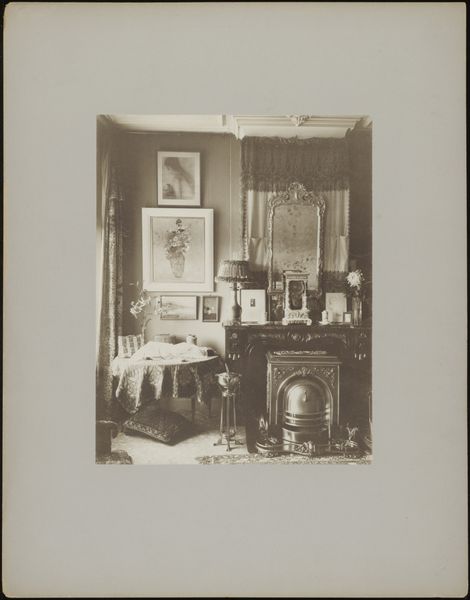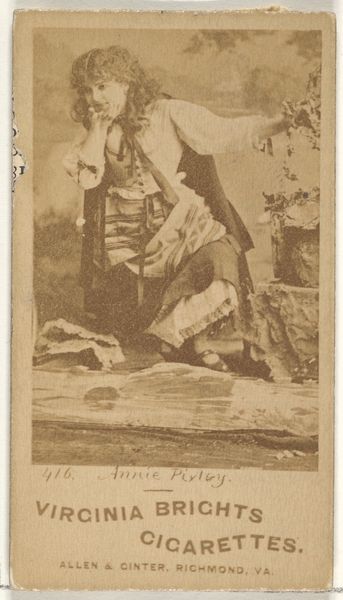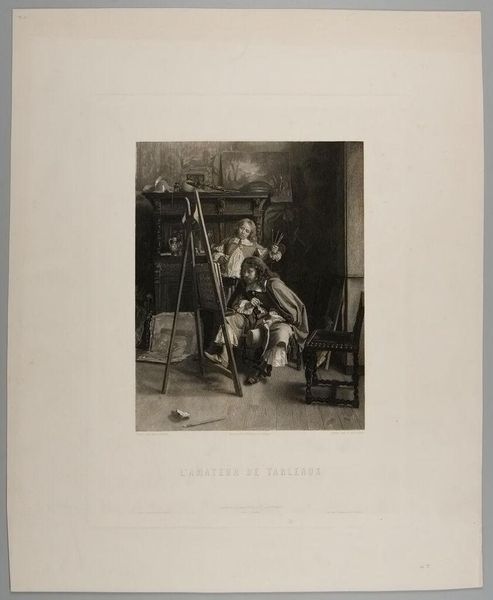
photography, gelatin-silver-print
#
still-life-photography
#
dutch-golden-age
#
charcoal drawing
#
photography
#
gelatin-silver-print
#
charcoal
#
mixed media
#
realism
Dimensions: height 146 mm, width 117 mm
Copyright: Rijks Museum: Open Domain
Editor: So, this is "Stilleven met degen, mand en kachelbenodigdheden," or Still Life with Sword, Basket, and Stove Equipment, created around 1855 by Eduard Isaac Asser. It's a gelatin silver print, and there's a melancholic feel to the textures and tones in it. How do you interpret this work, especially considering it’s a still life created using photography, a relatively new medium at the time? Curator: This photograph presents us with an opportunity to consider the intersections of domesticity, masculinity, and technological progress during the mid-19th century. It challenges the conventions of traditional still life painting and reflects the changing societal roles and power dynamics of the era. How do you see the arrangement of these objects contributing to such narratives? Editor: I guess the sword is the most striking element, disrupting what would otherwise be a purely domestic scene. Does it perhaps imply something about the role of men, or maybe a reference to conflicts of the era? Curator: Precisely! The presence of the sword suggests a societal link between men and aggression; while items connected with home warmth and domestic tranquility surround it. This interplay encourages us to question not just what is presented, but also who it is for, and what assumptions the artist makes about gender roles in a rapidly modernizing world. Moreover, Asser's choice to embrace photography – a groundbreaking medium during that era – allows us to engage in discussions around scientific objectivity and artistic expression. Editor: That’s a really interesting angle! I was just seeing objects, but now it seems much more about gender and progress. Curator: Exactly. Thinking about those objects within that socio-political landscape, we can engage in a crucial dialog about identity. What has this taught you about considering art beyond the surface level? Editor: It shows me how vital it is to consider history, sociology and gender when studying art. Thanks, it's so great to explore art with you. Curator: The pleasure is mine, especially when such important questions are raised!
Comments
No comments
Be the first to comment and join the conversation on the ultimate creative platform.
